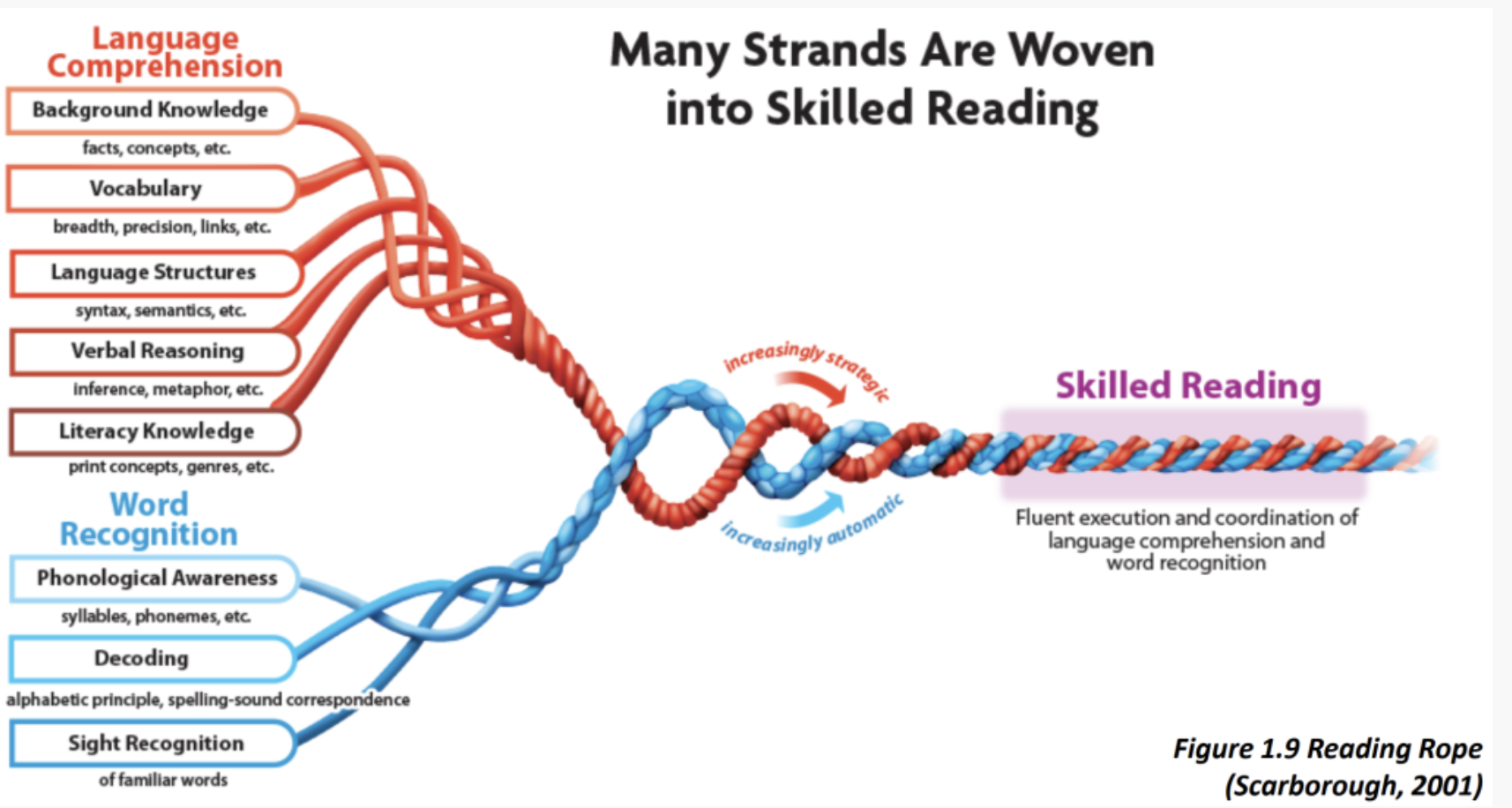Unpicking Scarborough’s Reading Rope: What It Means for Literacy in Schools
Interventions become more precise when we know where the rope is fraying.
If you’ve spent any time exploring the science of reading, you’ll likely have come across Scarborough’s Reading Rope. First developed by Hollis Scarborough in 2001, this visual metaphor has become one of the most widely used frameworks for understanding how skilled reading develops. But what does it really mean for teachers in classrooms? And how can schools use it to strengthen literacy teaching?
What Is the Reading Rope?
Scarborough’s Reading Rope illustrates how the different strands of reading skills weave together over time to create fluent, automatic reading comprehension. It breaks the process into two main strands:
Word Recognition
Phonological awareness
Decoding (spelling–sound correspondence)
Sight recognition of familiar words
Language Comprehension
Background knowledge
Vocabulary
Language structures (syntax, semantics)
Verbal reasoning (inference, prediction)
Literacy knowledge (genres, text structures)
At first, these strands are relatively weak and separate. But with effective instruction and practice, they gradually intertwine and strengthen — much like strands of a rope — until reading comprehension becomes fluent and automatic.
Why the Rope Matters
The power of Scarborough’s Reading Rope is that it shows us reading is not a single skill. It’s a complex weave of processes that need to be taught, nurtured, and practised. For schools, this has three key implications:
Decoding Isn’t Enough
Systematic phonics is crucial, but children also need rich language experiences to develop comprehension. A strong reading diet means stories, discussion, subject knowledge and vocabulary.Comprehension Needs Explicit Teaching
We can’t assume pupils will “pick up” skills like inference or text structure awareness. These need modelling, scaffolding and practice across the curriculum.Reading Is Everyone’s Responsibility
The rope reminds us that science teachers, history teachers and geography teachers all contribute to vocabulary, background knowledge and comprehension. Literacy leadership needs to engage all staff, not just English departments.
Using the Reading Rope in Practice
As a CPD Tool
Use the rope to help staff see the bigger picture of reading and their role within it. It’s an accessible way to break down the complexity of reading.To Diagnose Needs
If a pupil is struggling, the rope can help identify which strand may be weak. Is it decoding? Vocabulary? Background knowledge? Interventions become more precise when we know where the rope is fraying.For Curriculum Design
Schools can map where and how different strands of the rope are developed across key stages. For example, explicit vocabulary teaching, inference progression, or knowledge-building across subjects.
Final Thoughts
Scarborough’s Reading Rope is more than just a diagram — it’s a powerful reminder that reading is woven from many interdependent skills. For schools, it offers both a framework for teaching and a tool for diagnosing barriers to reading success.
At Empowerment Consultancy, we support schools in turning the Reading Rope into action: from staff training that unpicks each strand, to whole-school strategies that strengthen both decoding and comprehension. Together, we can help every pupil weave the skills they need to become confident, independent readers.

